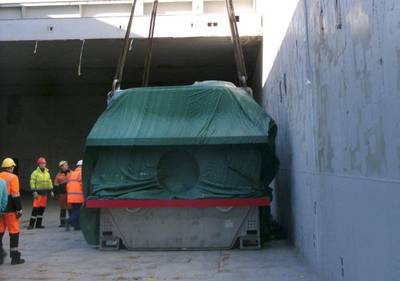DHL Solve Weighty Problem, Deliver UK MRI Scanner to USA
DHL Global Forwarding say they have delivered the world's largest Magnetic Resonance Imaging (MRI) scanner ever built to the Center for Magnetic Resonance Research at the University of Minnesota. The journey of the 100-ton heavy-load module from Oxford, United Kingdom, to its destination in the U.S. via ocean and road freight took almost 6 weeks.
"Even though we do have a lot of experience in heavyweight cargo transports, this project has really been an interesting challenge for us. Due to its weight, the floor of the warehouse in Oxford had to be reinforced and we used a mega-lift system to get it onto the trailer for transportation. Our team planned the transfer for almost two years, including route surveys in the UK and U.S.", explains Nikola Hagleitner, CEO Industrial Projects, DHL Global Forwarding.
The MRI scanner's journey started from Oxford on an eight axle trailer towards Antwerp, Belgium, arriving on October 29th, 2013. To transport anything of this size and weight in the UK requires a special permit and police escorts at all times to ensure safety on the roads.
From there, the oversized brain scanner was shipped via vessel across the Atlantic and navigated through the Great Lakes to Duluth, Canada, on the last ship from Europe in 2013 before the lakes froze over. After arrival two weeks later, it was loaded onto a 19 axle step deck truck, 193 feet in length, moved by one truck at the front pulling and one at the back pushing. As in the UK, this required an escort at all times, co-ordinated between state police, local police and private security.
The last leg of the journey, from Duluth to the University of Minnesota, took two days and the cargo was safely delivered on December 7th, 2013. The MRI scanner has already been installed at the Center for Magnetic Resonance Research and will be used for research in high field magnetic resonance imaging as well as for anatomic, physiologic, metabolic, and functional studies in humans and animal models.











